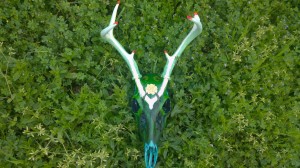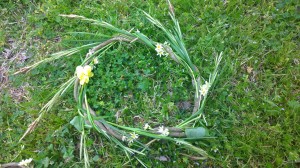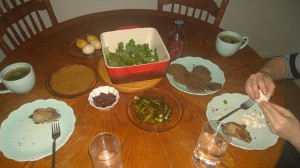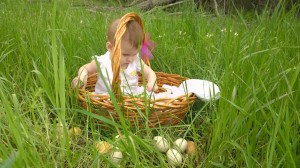—>Let me preface this by saying that I’m sorry that I didn’t take any pictures of the seeds or of them being planted; I feel like a fool for not doing so (in the interest of transparency, of course). Allow me to make it up by taking many more pictures as soon as the first shoots appear….
As I mentioned in the previous post, we planted the remainder of the wild seeds the other day with the beginning of Spring. These included: Turk’s cap mallow (Malvaviscus arboreus var. drummondi), American beautyberry (Callicarpa americana), sunflower (Helianthus spp.), and mullein (Verbascum thapsis). Additionally I went ahead and planted the prickly pear seeds (Opuntia spp.) that we had, because why the hell not? In an earlier post I’d described how and why we had already planted the passionvine seeds.
The Turk’s cap mallow was planted in a ring around the outside of where we had planted the passionvine seeds. Turk’s cap does best in partial shade and the climbing passionvines, coupled with the crape myrtles they’re planted around, should provide adequate shade to make the mallows happy. That said, they would have been alright planted out in the open instead.
The beautyberries, being a, purportedly, easy plant to sprout, were simply interred along the fence-line, along with some left over mallow seeds.
The mullein and prickly pear I planted in an open area of the yard, more in an effort to keep track of them than in any real concern for their well-being. Mullein is an easy plant to grow, I hear. I have seen them more often than not in drier areas of Texas, but that could be coincidence. The plants which I collected these seeds from came from here in town, so I expect them to be fine. Opuntia, being cacti, does have prerequisites. However, I have seen plenty of medium to large stands growing in the well-watered yards of some of my neighbors, so who knows? At any rate, I never expected to have good luck with the seeds, as it is much easier and efficient to propagate cacti from cuttings instead.
As I outlined in the original manifesto for this project, we were embarking on this experiment not only in the interest of trying to prove a method of providing free supplemental nutrition for ourselves (and others), but showing that at the same time we’d be enhancing and restoring the natural habitat which we call home. To that end we have taken a rough census of the other animal species which share in our immediate area and as this project goes on, we will try and note any increases or additions to their populations. As of right now, our home-area is inhabitated by a pair of mockingbirds (Mimus polyglottos), a pair of cardinals (Cardinalis cardinalis), around five or seven house sparrows (Passer domesticus), a flock of fifteen to thirty white-winged doves (Zenaida asiatica), a flock of perhaps thirty to sixty grackles (Quiscalus spp.), three wild cats (Felix domesticus), two wily dogs (Canis lupus domesticus), and three crafty humans (Homo sapiens). There are species of wasp (order Hymenoptera, sub. Apocrita), cranefly (family Tipulidae), field cricket (subfamily Gryllinae), fire ant (Solenopsis spp.), among others. Dead Short-tailed shrews (Blarina carolinensis) have been found, presumably executed by our Felix domesticus. Markedly absent are the common Texas toads (Anaxyrus speciosus) which are abundant in other areas of town. My guess is that North Bryan is drier and more open than the low wetlands of College Station, particularly around Wolf Pen creek, where we used to live. Perhaps, if these plants sprout and thrive, more cover will become available rendering the soil cooler and more damp thus allowing the toads a place as well.
Illustrating this positively-correlating relationship is the crux of our endeavor. We are dedicated to showing how people and their environment can be and are connected; that people can gain real, physical benefits from restoring their natural habitats. We can have a positive relationship with our environment, because we are inherently a part of it; all we have to do is remember that.





